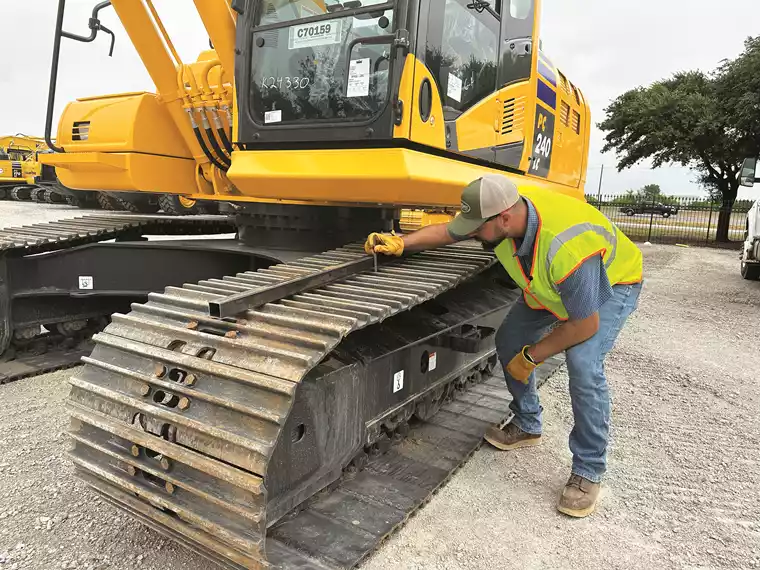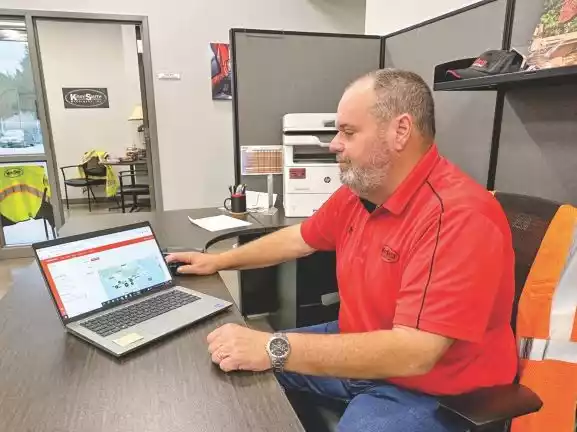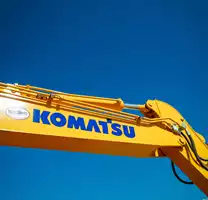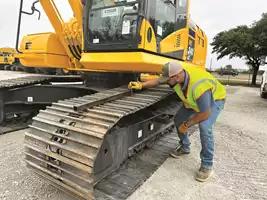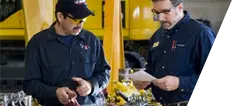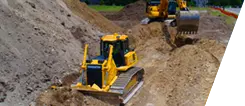Keeping your excavator’s tracks at the proper tension is a small step that makes a big difference. When tracks are too tight or too loose, it can lead to unnecessary wear, de-tracking, and costly downtime.
In this edition of Ask the PSSR, Marc Owens from Kirby-Smith Machinery’s Fort Worth Branch walks you through why track tension matters and how to adjust it the right way.
🎥 Watch the full video here
Why Track Tension Matters
Excavator tracks that aren’t adjusted properly don’t just affect performance. They can shorten the lifespan of your undercarriage components and even lead to expensive repairs.
“Tracks do need to have some sag, usually around 1.5 to 2 inches depending on the machine,” Owens explains. “More than that is too much. If you see a lot of sag between the carrier rollers and the idler, or between the carrier and sprocket, your tracks are too loose, which can lead to slippage.”
Before every shift, operators should visually inspect track tension. But to be sure, Owens recommends checking against the specs in your operation and maintenance manual, which outlines the correct measurement for your specific model.
Tools You’ll Need
- You don’t need anything fancy, just a few basics:
- A straight edge long enough to span from the front carrier roller to the front idler
- A ruler or tape measure
- A grease gun
- A socket or wrench for the tension fitting
Use the straight edge and ruler to measure the distance between the top of the grouser pad and the bottom of the straight edge. Compare that number to the spec in your manual to determine whether you need to add or release grease.
How to Adjust Excavator Track Tension
Adjustment is made through the access port on the undercarriage near the front of the machine.
- Add grease by connecting your grease gun to the zerk fitting and pumping until the measurement matches the recommended tension.
- Release grease by slightly loosening the fitting with a socket or wrench until some grease is expelled, then tighten it back once the desired sag is achieved.
- Track the machine forward the length of the tracks on the ground and re-measure to confirm proper adjustment.
“The process is fairly simple and straightforward. it can be done in a matter of minutes,” says Owens. “Just make sure you’ve got your grease gun, ruler, and straight edge handy.”
Preventative Maintenance Tips
Keeping your tracks clean goes hand in hand with proper tension. Debris such as mud, clay, or concrete can pack into the undercarriage and cause premature wear.
“An ounce of prevention saves a lot of time and money later,” Owens adds. “Taking a few minutes each day to check tension and clean the tracks can help avoid downtime when you can least afford it.”
Learn More
Watch Marc Owens walk through the process step-by-step in this quick video:
👉 Watch on YouTube
For more service tips and support, contact your local Kirby-Smith Machinery branch or visit www.kirby-smith.com.
###

